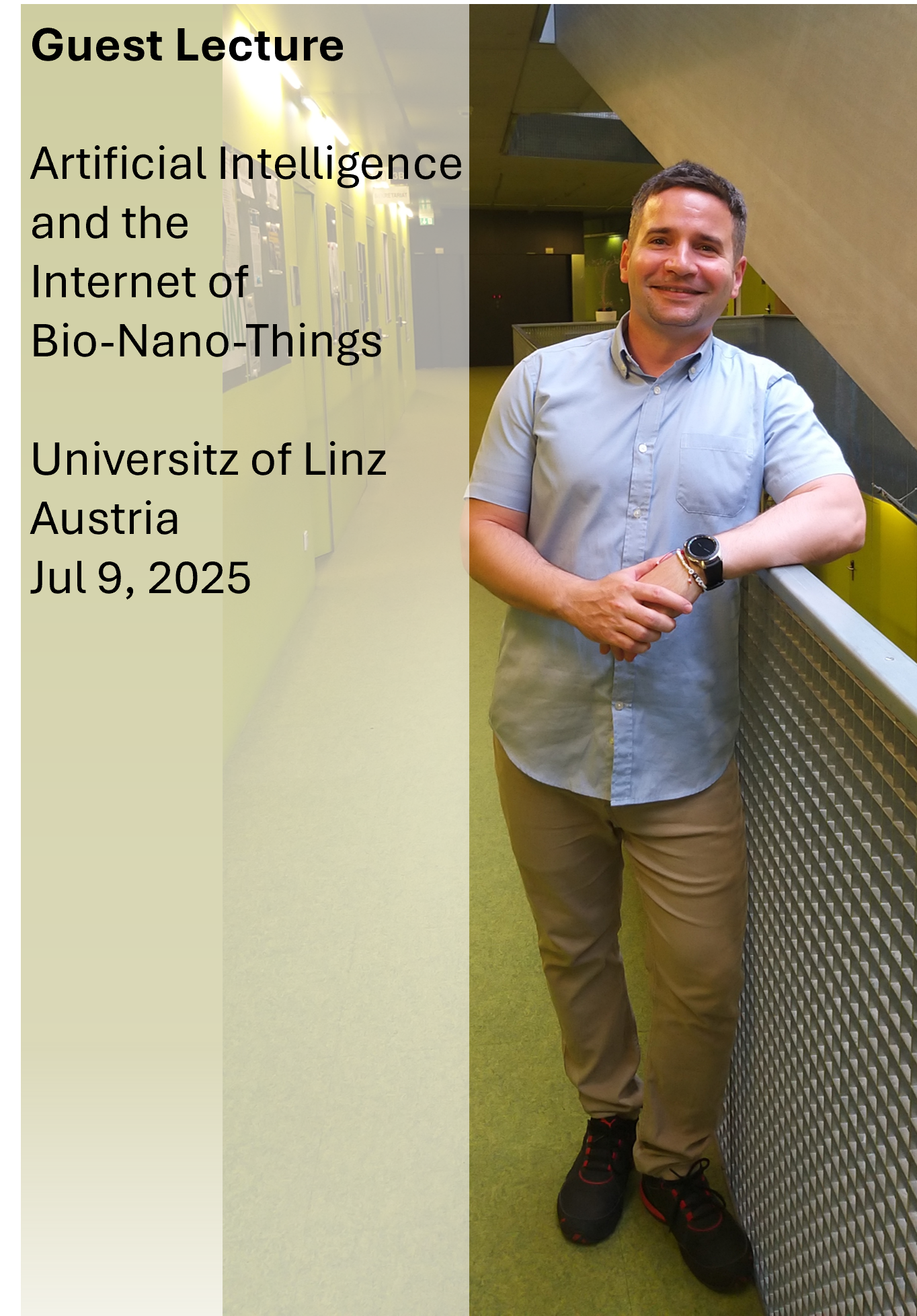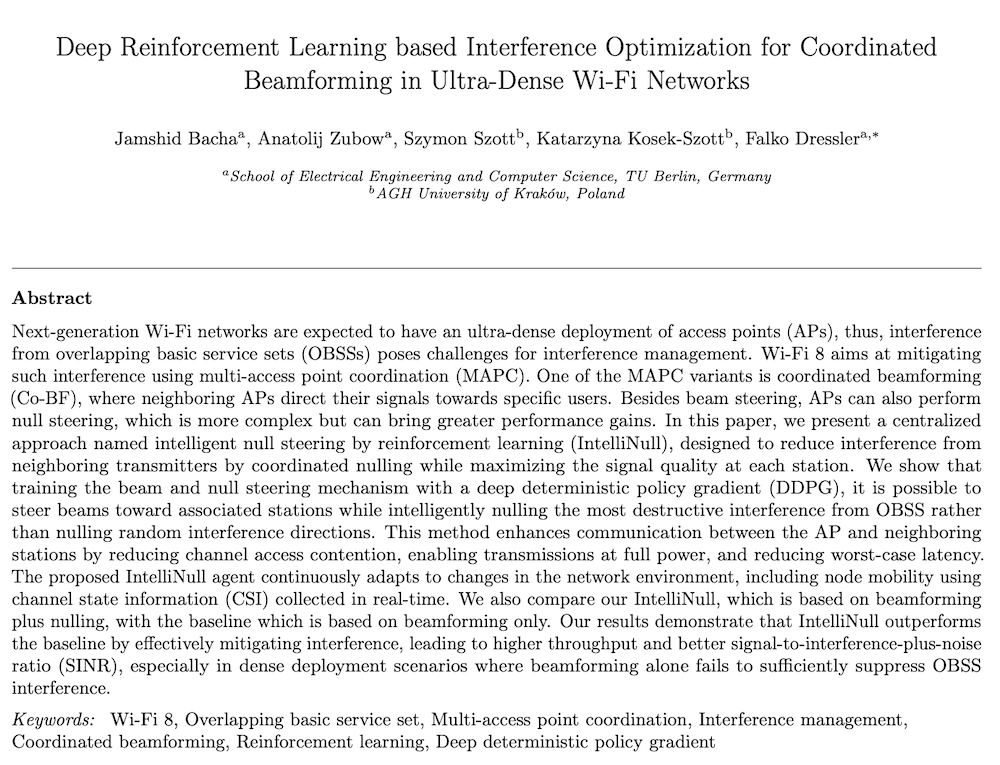Literature Database Entry
zemouri2016enhanced
Sofiane Zemouri, "Enhanced Wireless Congestion Control in Urban Vehicular Environments," PhD Thesis, School of Computer Science, University College Dublin, July 2016. (Advisors: John Murphy and Soufiene Djahel; Referees: Falko Dressler and Declan Delaney)
Abstract
Despite many recent advances in the field of Vehicular Ad Hoc Networks (VANETs), channel congestion remains one of the main challenges facing the VANET research community. Considerable efforts have been directed in recent years towards designing flexible yet robust solutions to control channel load in VANETs, such as the ETSI initiative DCC (Decentralised Congestion Control). Despite these efforts, without a deep understanding of the mechanics that govern this load, its management and processing is still an open issue. This thesis provides a comprehensive study of the wireless channel capacity in VANETs and sets an approximation for its upper limit in order to study the mechanics of congestion control. Different possible ways of achieving this control are investigated through analysing the spatial dimension (geographic region), in terms of messaging requirements, as well as the temporal dimension (periodicity and messaging frequency). Then a discussion of the best combination that leverages the strengths of both congestion control approaches is given. In order to control the load generated by multi-hop event-driven warning messages, a distributed dissemination protocol for safety information in urban areas, Road-Casting Protocol (RCP), is introduced. RCP is based on a novel cooperative forwarding mechanism that reduces the number of messages disseminated while reaching the maximum number of targeted vehicles. Moreover, an accurate definition of the Region of Interest (RoI) - namely, the geographical scope - of each broadcasted safety message is determined in order to minimize the impact of these messages on the channel load and limit it to the targeted area. Furthermore, in order to control the load generated by single-hop periodic beacon messages, a new congestion control protocol, the Prediction and Adaptation Algorithm (P&A-A), is presented that performs a joint adaptation of the transmit rate and power. P&A-A relies on a short-term vehicular density prediction algorithm to forecast peaks in the channel load and proactively take the required measures in order to avoid message collisions. Additionally, P&A-A adapts the transmit parameters to guarantee the required operation of the most critical VANET applications.
Quick access
Contact
Sofiane Zemouri
BibTeX reference
@phdthesis{zemouri2016enhanced,
author = {Zemouri, Sofiane},
title = {{Enhanced Wireless Congestion Control in Urban Vehicular Environments}},
advisor = {Murphy, John and Djahel, Soufiene},
institution = {School of Computer Science},
location = {Dublin, Ireland},
month = {7},
referee = {Dressler, Falko and Delaney, Declan},
school = {University College Dublin},
type = {PhD Thesis},
year = {2016},
}
Copyright notice
Links to final or draft versions of papers are presented here to ensure timely dissemination of scholarly and technical work. Copyright and all rights therein are retained by authors or by other copyright holders. All persons copying this information are expected to adhere to the terms and constraints invoked by each author's copyright. In most cases, these works may not be reposted or distributed for commercial purposes without the explicit permission of the copyright holder.
The following applies to all papers listed above that have IEEE copyrights: Personal use of this material is permitted. However, permission to reprint/republish this material for advertising or promotional purposes or for creating new collective works for resale or redistribution to servers or lists, or to reuse any copyrighted component of this work in other works must be obtained from the IEEE.
The following applies to all papers listed above that are in submission to IEEE conference/workshop proceedings or journals: This work has been submitted to the IEEE for possible publication. Copyright may be transferred without notice, after which this version may no longer be accessible.
The following applies to all papers listed above that have ACM copyrights: ACM COPYRIGHT NOTICE. Permission to make digital or hard copies of part or all of this work for personal or classroom use is granted without fee provided that copies are not made or distributed for profit or commercial advantage and that copies bear this notice and the full citation on the first page. Copyrights for components of this work owned by others than ACM must be honored. Abstracting with credit is permitted. To copy otherwise, to republish, to post on servers, or to redistribute to lists, requires prior specific permission and/or a fee. Request permissions from Publications Dept., ACM, Inc., fax +1 (212) 869-0481, or permissions@acm.org.
The following applies to all SpringerLink papers listed above that have Springer Science+Business Media copyrights: The original publication is available at www.springerlink.com.
This page was automatically generated using BibDB and bib2web.







